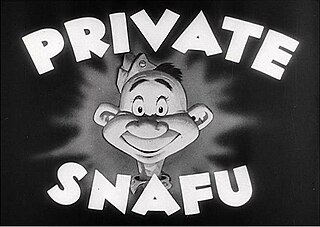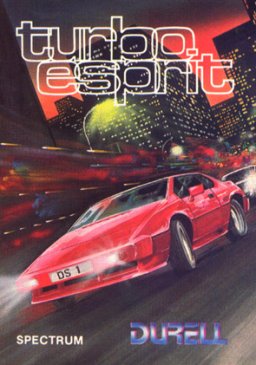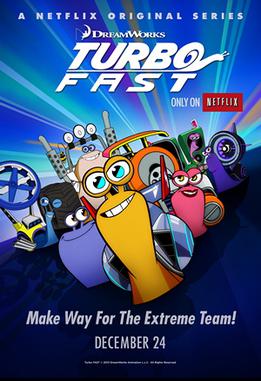
Asteroids is a space-themed multidirectional shooter arcade video game designed by Lyle Rains and Ed Logg released in November 1979 by Atari, Inc. The player controls a single spaceship in an asteroid field which is periodically traversed by flying saucers. The object of the game is to shoot and destroy the asteroids and saucers, while not colliding with either, or being hit by the saucers' counter-fire. The game becomes harder as the number of asteroids increases.

HyperCard is a software application and development kit for Apple Macintosh and Apple IIGS computers. It is among the first successful hypermedia systems predating the World Wide Web.

Jeep is an American automobile marque, now owned by multi-national corporation Stellantis. Jeep has been part of Chrysler since 1987, when Chrysler acquired the Jeep brand, along with other assets, from their previous owner American Motors Corporation (AMC).

Space Shuttle Challenger (OV-099) was a Space Shuttle orbiter manufactured by Rockwell International and operated by NASA. Named after the commanding ship of a nineteenth-century scientific expedition that traveled the world, Challenger was the second Space Shuttle orbiter to fly into space after Columbia, and launched on its maiden flight in April 1983. It was destroyed in January 1986 soon after launch in a disaster that killed all seven crewmembers aboard.

The Sega CD, known as Mega-CD in most regions outside North America and Brazil, is a CD-ROM accessory for the Sega Genesis produced by Sega as part of the fourth generation of video game consoles. It was released on December 12, 1991, in Japan, October 15, 1992, in North America, and April 2, 1993, in Europe. The Sega CD plays CD games and adds hardware functionality such as a faster CPU and graphic enhancements such as sprite scaling and rotation. It can also play audio CDs and CD+G discs.
Dodge is an American brand of automobiles and a division of Stellantis North America, based in Auburn Hills, Michigan. Dodge vehicles have historically included performance cars, and for much of its existence Dodge was Chrysler's mid-priced brand above Plymouth.

Star Raiders is a space combat simulator video game created by Doug Neubauer and published in 1980 by Atari. The player assumes the role of a starship fighter pilot, who must protect starbases from invading forces called Zylons. Piloting and combat are shown in the 3D cockpit view, while a 2D galactic map shows the state of the Zylon invasion. Neubauer made the game during in his spare time at Atari, inspired by contemporary media such as Battlestar Galactica and Star Wars, as well as the 1971 mainframe game Star Trek. Originally released on the Atari 400/800 computers, Star Raiders was later ported to the Atari 2600, Atari 5200, and Atari ST.

Private Snafu is the title character of a series of black-and-white American instructional adult animated shorts, ironic and humorous in tone, that were produced between 1943 and 1945 during World War II. The films were designed to instruct service personnel about security, proper sanitation habits, booby traps and other military subjects, and to improve troop morale. Primarily, they demonstrate the negative consequences of doing things wrong. The main character's name is a play on the military slang acronym SNAFU, "Situation Normal: All Fucked Up".

The NES Zapper, also known as the Video Shooting Series light gun in Japan, is an electronic light gun accessory for the Nintendo Entertainment System (NES) and the Japanese Famicom. It was released in Japan for the Famicom on February 18, 1984, and launched alongside the NES in North America in October 1985.

"Tears Are Not Enough" is a 1985 charity single recorded by a supergroup of Canadian artists, under the name Northern Lights, to raise funds for relief of the 1983–85 famine in Ethiopia. It was one of a number of such supergroup singles recorded between December 1984 and April 1985, along with Band Aid's "Do They Know It's Christmas?" in the United Kingdom, USA for Africa's "We Are the World" in the United States, "Cantaré, cantarás" by a supergroup of Latin American and Spanish singers, Chanteurs sans Frontières's "Éthiopie" in France, and Fondation Québec-Afrique's "Les Yeux de la faim" in Quebec.

Mister Heartbreak is the second studio album by American avant-garde artist, singer and composer Laurie Anderson, released on February 14, 1984, by Warner Bros. Records.

Turbo Esprit is a video game published by Durell Software in 1986 for the ZX Spectrum, Commodore 64, and Amstrad CPC. The game was very detailed and advanced for its time, featuring car indicator lights, pedestrians, traffic lights, and a view of the car's interior controls. Turbo Esprit was the first free-roaming driving game, and has been cited as a major influence on the later Grand Theft Auto series.

KMNY is a commercial AM radio station licensed to Hurst, Texas, and serving the Dallas Fort Worth Metroplex. It is owned by Multicultural Broadcasting and broadcasts a Spanish-language Christian radio format known as "La Voz 1360." KMNY uses a brokered programming approach, where preachers buy blocks of time on the station and can ask for donations during their shows to support their ministries.
William Bernard Unett was a British racing driver and development engineer, three times winner of the British Saloon Car Championship in 1974, 1976 and 1977.
The Indianapolis 500 auto race has been the subject for several motion pictures. It has also received countless references in television, film, commercials, books, and other media. The following is a list of such references.

Abbott and Costello in Hollywood is a 1945 American black-and-white comedy film directed by S. Sylvan Simon and starring the comedy team of Abbott and Costello alongside Frances Rafferty. Made by Metro-Goldwyn-Mayer, it was produced by Martin A. Gosch.

"Sans logique" is a 1988 song recorded by French singer-songwriter Mylène Farmer. It was released on 20 February 1989 as the fourth and last single from her second studio album Ainsi soit je.... The song deals with schizophrenia, death, love and religion and was accompanied by a cinematic video which shows a human corrida. The single became a top ten hit in France.

The Alfa Romeo Giulia is a compact executive car produced by the Italian manufacturer Alfa Romeo. Known internally as the Type 952, it was unveiled in June 2015, with market launch scheduled for February 2016, and it is the first saloon offered by Alfa Romeo after the production of the 159 ended in 2011. The Giulia is also the first mass-market Alfa Romeo vehicle in over two decades to use a longitudinal rear-wheel drive platform, since the 75 which was discontinued in 1992. The Giulia was second in 2017 European Car of the Year voting and was named Motor Trend Car of the Year for 2018. In 2018, Giulia was awarded the Compasso d'Oro industrial design award.

Turbo Fast is an American flash-animated television series based on the 2013 computer-animated film Turbo. Produced by DreamWorks Animation Television and animated by Titmouse, it was released exclusively on Netflix in the United States and in the 40 countries where Netflix offers its services at the time, but it became available worldwide via Netflix over time. It is the first Netflix original series for children, and the first DreamWorks Animation series produced for Netflix.

The Retro Chameleon, originally called the Retro VGS then Coleco Chameleon prior to the loss of the Coleco Holdings license, is a cancelled home video game console. Its creators have stated that it was inspired by the second to fifth generations (1976–1999) of home video game consoles, and like most consoles of those generations, the Retro VGS had planned to run all of its games on individual cartridges, as opposed to optical discs and digital download. The Retro VGS was not expected to support any manner of online connectivity whatsoever, meaning all hardware and software released would have been the final product, and would not have the ability to update after release. A Kickstarter campaign was initially planned to raise funds for the project, but this was later moved to Indiegogo one week before the start of the campaign when a physical prototype was not produced.
















